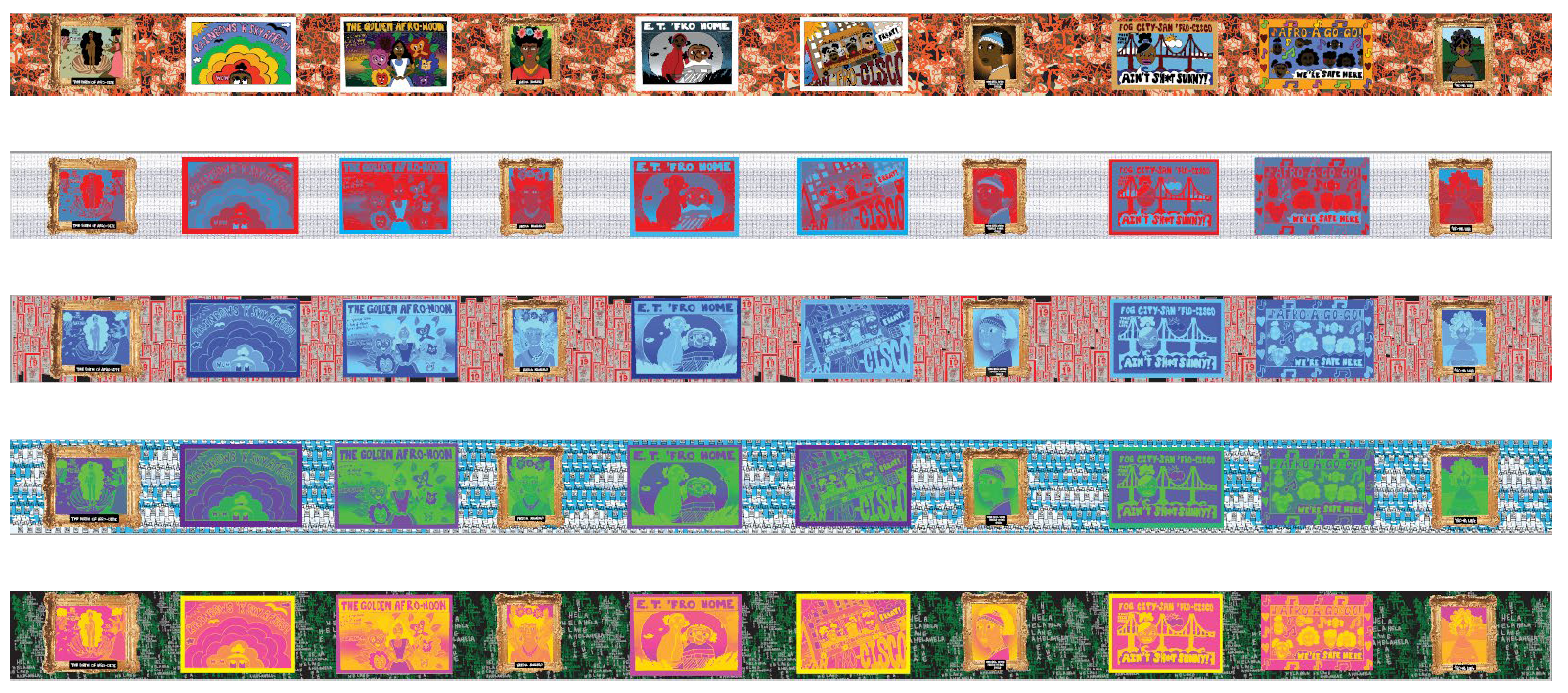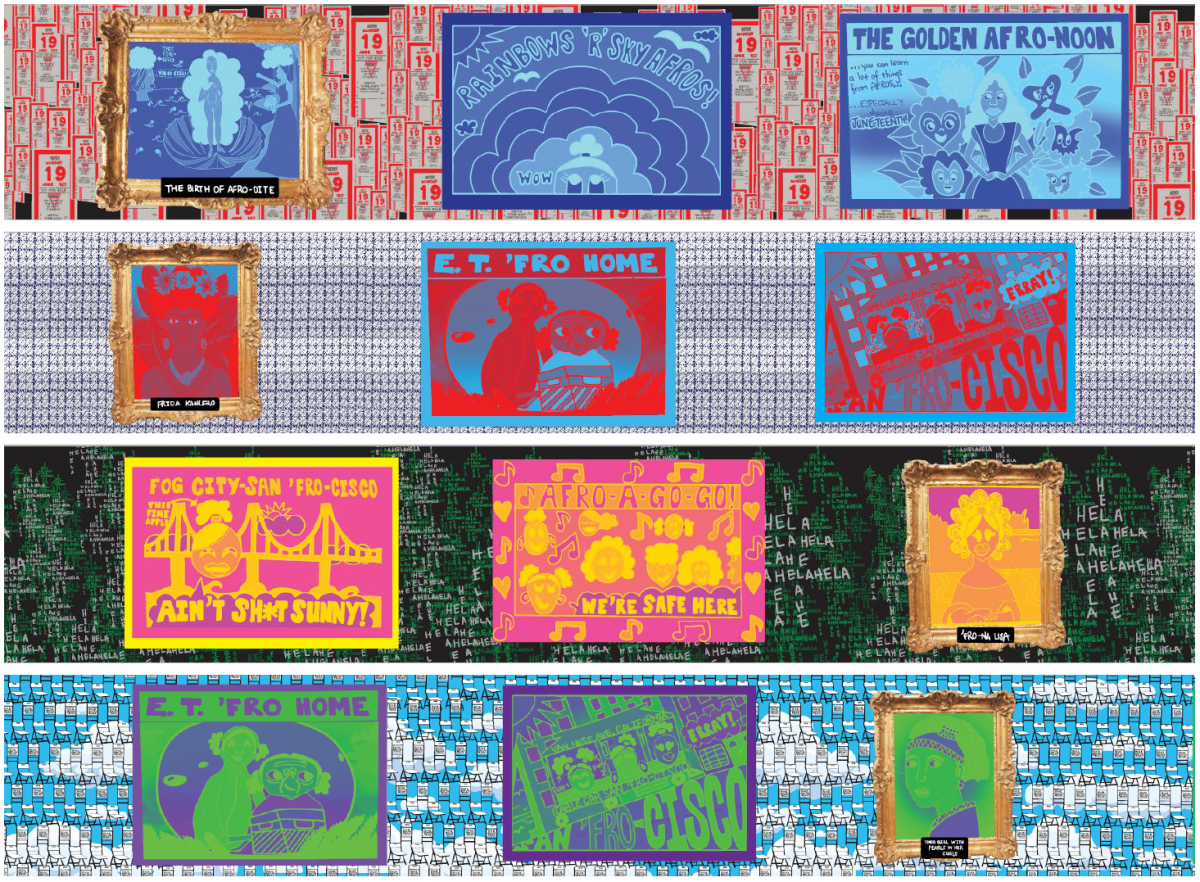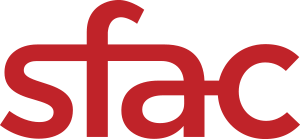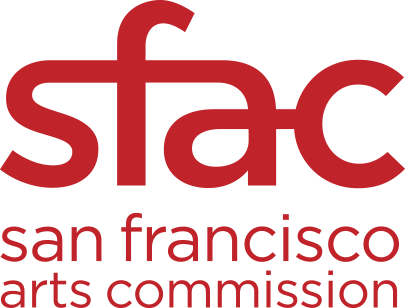Fourth and Final Installment of Southeast Treatment Plant Construction Fence Temporary Public Art Program Mural Unveiled on Evans Avenue in Bayview-Hunters Point
New 500-Foot Installation by Afatasi The Artist Incorporates Motifs and Excerpts from “Afro Block Party” to Showcase Her Community’s Experience, History and Cultural Identity

Renderings of Modalities & Motifs (2023) by Afatasi The Artist, Evans Avenue, Southeast Treatment Plant construction fence.
SAN FRANCISCO, November 17, 2023 — The San Francisco Public Utilities Commission (SFPUC) and San Francisco Arts Commission (SFAC) are thrilled to announce the installation of a new temporary mural along Evans Avenue on the Southeast Treatment Plant construction fence as part of a joint temporary public art program.
Modalities and Motifs, by Afatasi The Artist, is the fourth and final installation in a series of artworks that activate temporary construction fencing around the wastewater treatment plant construction area. It will be on view for one year through fall 2024.
“The temporary works that have been created as part of the Southeast Treatment Plant public art program have allowed us to reimagine what our construction sites can look like,” said SFPUC General Manager Dennis Herrera. "Even while under construction, we want our capital improvement projects to benefit the community by creating shared experiences through public art to connect people and places. This program has given us the opportunity to actively engage with and support local artists, and we look forward to continuing to grow this partnership with the community.”
As part of the Sewer System Improvement Program (SSIP), the SFPUC is investing over $3 billion to modernize the aging Southeast Treatment Plant, including upgrading the Headworks, where the first step in the wastewater treatment process occurs. Recognizing the important role of art in the community, this series of murals was made possible by San Francisco's 2%-for-art program, which allocates 2% of above-ground construction costs from the Headworks Facility project upgrades towards commissioning and integrating arts and cultural elements into the new facilities as well as during construction. The SFPUC partners with the SFAC to ensure the funds support local artists and recognize and celebrate the people, values, and history of the Bayview-Hunters Point community.
“The Southeast Treatment Plant temporary public art program has been a wonderful opportunity for the San Francisco Arts Commission to partner and work closely with the Public Utilities Commission and local artists selected from the Bayview Artist Registry to showcase vibrant works created by local artists with close ties to the Bayview-Hunters Point community,” said SFAC Director of Cultural Affairs, Ralph Remington. “Through the SFPUC’s ongoing investment and commitment to the arts, I’m thrilled that over the past four years, we have been able to provide a prominent and visible space for artists like Afatasi The Artist to showcase, highlight and uplift stories and art that are truly reflective of the communities we are working in.”
As a result of this partnership, a temporary public art program was launched in 2020 in conjunction with the Headworks Facility Project to feature the work of four local artists for a period of one year each through 2024. Previous artists and their installations include Sirron Norris, The Illustrated History of Bayview-Hunters Point (2020), Malik Seneferu, Clear the Air (2021), and Nancy Cato, Jamari’s Journey (2022). As part of their project, each artist engaged with Bayview-Hunters Point community youth, seniors, and schools in the development of their artwork designs.
As the fourth installation in the series, Afatasi The Artists’ mural design measures 500 feet in length and features a series of motifs that are deployed as a mode of visual storytelling, highlighting various facets of her community’s experience, history, and cultural identity. Developed in collaboration with graphic designer Sophia Tupuola, the distinctive patterns that repeat across the background of each mural section seek to honor Afatasi and her community’s unique lineage and history both locally and nationally; deep appreciation and respect for their ancestors, elders, and architects of freedom; continued fight for human rights in the United States; “Black-American” culture and beauty created under extreme duress; and the understanding that everything in the past, present and future is connected.
“Symbols, motifs and patters function as an important form of visual storytelling, giving us context and social cues and have deep meaning and cultural implications,” shared Afatasi The Artist in a statement. “I'm so excited to finally share these murals with the community. It's been wonderful to work with the Arts Commission on this project and to be able to share our story, our experience, history, and cultural identity on such a large scale.”

Detailed close up rendering view of Modalities & Motifs (2023) by Afatasi The Artist, Evans Avenue, Southeast Treatment Plant construction fence.
Displayed along the length of the mural are five different motifs and excerpts from Afatasi’s ongoing series Afro Block Party, featuring pop art-style portraits of various art historical, pop culture, and local personalities reinterpreted as cartoon characters with different Afro hairstyles.
Five different motifs were created by the artist for this project:
- Buffalo Soldier Motif: In 1866, the United States Congress effusively segregated the United States Army with the establishment of six regiments which consisted entirely of newly emancipated Freedmen (formerly enslaved men), who were eventually known as The Buffalo Soldiers. They were fierce soldiers who fought bravely in many significant military events; when outnumbered and outgunned, THEY STILL WON, and were amongst the most decorated soldiers of their time. They also were amongst the first National Park Rangers. Afatasi honors the military history of San Francisco’s only shrinking demographic, as our contribution to the military of America is SIGNIFICANT.
- North Star Motif: Where would we be without our star guides? In this motif, The North Star (Polaris, Alpha Ursae Minoris) is centered for its role as a navigational tool used by our architects of freedom — from Harriet Tubman to the millions of unknown souls who were guided by The North Star to their fates.
- Freedom Day Transfer Motif: On June 19, 1865, The United States Union Army arrived in Galveston, Texas and announced the emancipation of enslaved persons by executive order. This motif honors the thousands of Texans who made San Francisco their home, and implemented Juneteenth celebrations in the city for decades. The SF Muni Transfer is a symbol of ridership, or being a passenger, as many people of The Great Migration used public/railway transportation systems along their journeys.
- Fade in the Water (Montgomery Riverfront Brawl) Motif: On August 5, 2023, a series of highly-disturbing videos went viral, and The Folding Chair of Resistance, was born. Kindly Google the details of this incident, to draw your own conclusions. Fade in the Water was seen by many descendants as an act of resistance and solidarity; for centuries, the public brutalization of enslaved people and their descendants raged with impunity. Unjustified White mob violence particularly during the American apartheid era, was a major contributing factor in The Great Migration, and for many people, San Francisco was the last stop on that journey.
- HELA Motif: This is a symbol for “HeLa” as in HeLa Cells, or the immortal cells of Henrieta Lacks, a Bal more woman and descendent of persons enslaved in The United States, whose cells were harvested from her body without her consent during her medical examinations for cervical cancer, which she later succumbed to. This motif gives honor and remembrance to all victims of cruel medical experimentation, malpractice, and negligence, due to race.
For more information about the artist’s Afro Block Party series and the meanings behind the five motifs she created for this project, please visit the artists’ website: www.afatasi.org.
###
About Afatasi The Artist
Afatasi The Artist is a mixed-media conceptual artist, futurist, proud native San Franciscan, and is a member of San Francisco’s only shrinking demographic. Her work is informed by her deep concern of the continued population decline of her community, affirming them through mixed-media textile, metal, and research-based artworks that are used as vehicles of disruption, exploration, and future-dreaming. Her artwork is a continuous exploration of the intersectionality of race, culture, gender, class, and geopolitics. Past injustices have shaped present-day realities, so what does this mean for our futures? The mediums used to navigate this question include textile, metalwork, and mixed-media visual arts.
About Construction at the Southeast Treatment Plant
The Southeast Treatment Plant (SEP) is San Francisco’s largest wastewater facility, treating nearly 80% of the City’s wastewater flow. Through the SFPUC’s Sewer System Improvement Program (SSIP), the SEP is undergoing a $3 billion investment to improve the plant’s reliability, replace aging infrastructure, reduce odors, and increase seismic resilience. When complete, the plant will look better, smell better, and work better for the community and entire city.
The New Headworks Facility Project is replacing the outdated facility responsible for beginning the treatment process, removing debris (such as baby wipes) and grit (like sand) from the wastewater stream, and protecting downstream equipment. The new Headworks Facility will use modern, efficient technologies to improve the treatment process and odor control within a smaller, more compact facility. Project completion is anticipated in 2024.
About the San Francisco Public Utilities Commission
The San Francisco Public Utilities Commission (SFPUC) is a department of the City and County of San Francisco. It delivers drinking water to 2.7 million people in the San Francisco Bay Area, collects and treats wastewater for the City and County of San Francisco, and generates clean power for residents, businesses and municipal facilities. Our mission is to provide our customers with high-quality, efficient and reliable water, power, and sewer services in a manner that values environmental and community interests and sustains the resources entrusted to our care. Learn more at www.sfwater.org.
About the San Francisco Arts Commission
The San Francisco Arts Commission (SFAC) is the City agency that champions the arts as essential to daily life by investing in a vibrant arts community, enlivening the urban environment, and shaping innovative cultural policy. Our programs include: Civic Art Collection, Civic Design Review, Community Investments, Public Art, SFAC Galleries, and Art Vendor Licensing. To learn more about the agency and other public art opportunities, visit www.sfartscommission.org.
-
Learn more about the Bayview Arts Master Plan and the Bayview Artist Registry.
To learn more about the SFPUC’s public art efforts, visit the agency’s art webpage.


